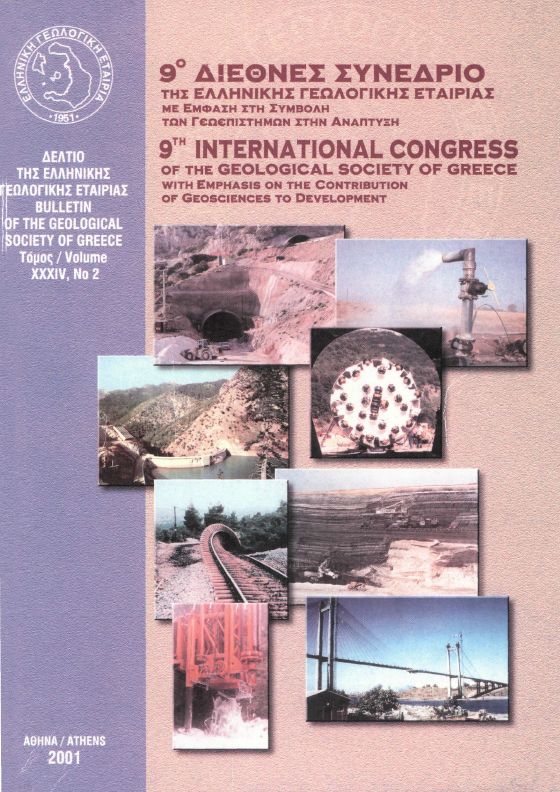The occurrence of the Internal Hellenides on Parnon mountain range, Centraleastern Peloponnesus

Abstract
Detailed mapping of the Parnon mountain range (centraleastern Peloponnesus) showed that over the already well-identified alpine units, which consist the principal mass of Peloponnesus, lies a clastic flysch-type formation, named by the authors as Glypia unit (nappe). This unit encounters in the broader area of Paleochori-Ag. Vasilios, west to the town of Leonidio. The northern margin of the exposure overlies tectonically the Upper Cretaceous limestones of Pindos unit whereas at the eastern, southern and western margins it overlies the Upper Cretaceous - Eocene limestones and the transitional to flysch formation of Tripolis unit through an normal fault. The principal flysch mass is consisted of reddish to brownish and greenish alterations of pelitic horizons, yellowish marly limestones and greenish coarse-grained sandstones. The grains of the latter have been derived from the erosion of a metamorphic exposure, most probably corresponding to 'Pelagonian' zone. After fossil determination, which took place on some of the horizons of the marly limestones, they turn out to be of Danian age. The occurrence of exotic blocks within the flysch matrix of the Glypia unit is quite often. They have derived from carbonate formations of Upper Cretaceous age with either pelagic or neritic character, carbonate formations of Permian age with a neritic character, dolomitic breccias, radiolarites, basaltic lavas along with reddish or greenish pelites and microbrecciated limestones of Upper Creataceous age and, coming to the end, serpentinites along with greenish pelites, sandstones and microbrecciated limestones of unknown age. The study of the tectonic fabric of the Glypia unit reveals an early compressional tectonic event, which has been overprinted by an intense extensional episode of NE-SW orientation. The latter has caused a significant thinning of the unit. The combination of the above mentioned data provides strong evidence, which integrates to the conclusion that the Glypia unit represents a similar unit either to the Ermioni complex in Argolis or to the nappe of Arvi and Miamou in Crete.
Article Details
- How to Cite
-
ΣΚΟΥΡΤΣΟΣ Ε., ΑΛΕΞΟΠΟΥΛΟΣ Α., ΖΑΜΠΕΤΑΚΗ-ΛΕΚΚΑ Α., & ΛΕΚΚΑΣ Σ. (2001). The occurrence of the Internal Hellenides on Parnon mountain range, Centraleastern Peloponnesus. Bulletin of the Geological Society of Greece, 34(1), 47–54. https://doi.org/10.12681/bgsg.16942
- Section
- General and Structural Geology

This work is licensed under a Creative Commons Attribution-NonCommercial 4.0 International License.
Authors who publish with this journal agree to the following terms:
Authors retain copyright and grant the journal right of first publication with the work simultaneously licensed under a Creative Commons Attribution Non-Commercial License that allows others to share the work with an acknowledgement of the work's authorship and initial publication in this journal.
Authors are able to enter into separate, additional contractual arrangements for the non-exclusive distribution of the journal's published version of the work (e.g. post it to an institutional repository or publish it in a book), with an acknowledgement of its initial publication in this journal. Authors are permitted and encouraged to post their work online (preferably in institutional repositories or on their website) prior to and during the submission process, as it can lead to productive exchanges, as well as earlier and greater citation of published work.




